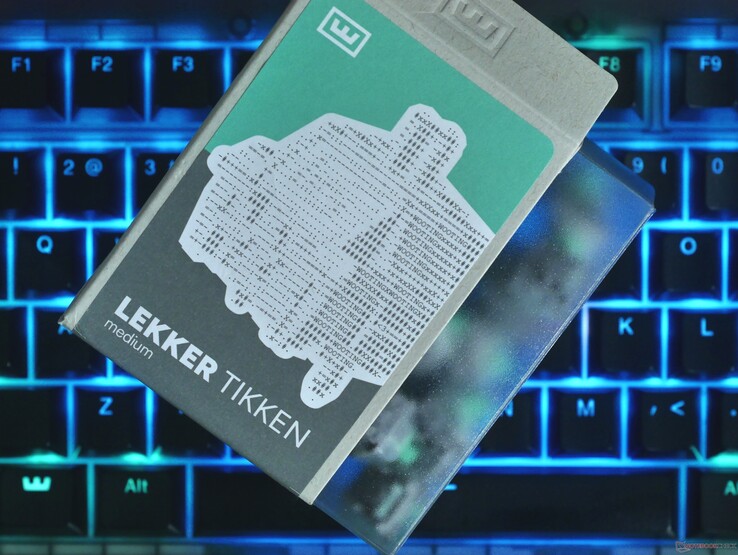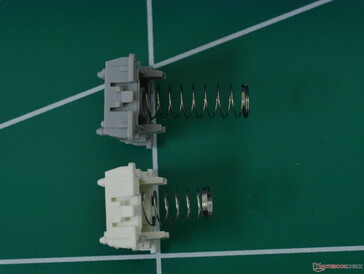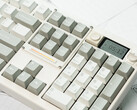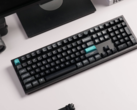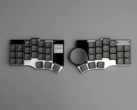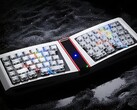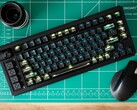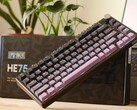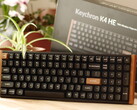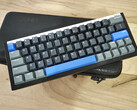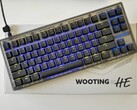
Near-perfect Hall effect switch with clean thocky sounds — Wooting Lekker Tikken vs Lekker V2 keyboard switch review
CheckMag
Wooting recently released the Lekker Tikken switches, the world's first closed-bottom Hall effect switch with a full 4 mm of travel. In this mini switch review, we compare the Lekker Tikkens to the Lekker V2 switches in the Wooting 80HE to see if the new Lekker Tikken switch is a worthwhile upgrade.Julian van der Merwe 👁 Published 🇪🇸 🇵🇹 ...
When Wooting announced the upcoming Wooting 60HE v2 Hall effect gaming keyboard, there was a lot of excitement about new features like 8 kHz polling, a friction fit gasket mount, split space bar layout, and most of all, the aluminium case. However, Wooting arguably more important than the new keyboard itself, Wooting also announced the new Wooting Lekker Tikken switches, which the company claimed would be the world's first closed-bottom Hall effect switch with a full 4 mm of travel.
That travel, while important, has not been the most important aspect of the Lekker Tikkens, which take Hall effect switches to the next level. Especially compared to the Wooting Lekker L60 V2 switches we tested in the 80HE — but even compared to the significantly better Gateron Jade Pro switches we tested in our Iqunix EZ63 review — the Lekker Tikkens are a significant step up in quality.
Construction and compatibility
At the surface, aside from colouration, there's not much difference between the Lekker Tikken switches and the Lekker V2s. Both have the same north-pole orientation, making them compatible with basically all Hall effect and TMR gaming keyboards on the market, but the Lekker Tikken switches also use a different, softer, material for the top housing. Disassembling the switch revealed that the top housing material is rather soft, which resulted in bending one of the clips on the top housing of the Lekker Tikken switch. While the clip didn't break off, it's still concerning, especially for those who want to disassemble an entire batch to lube or mod them.
We'll get into how the softer material affects the sound and feel in a moment, but the slightly more opaque top housing tends to dim the RGB shine-through effect somewhat compared to the Lekker L60 V2 switches. This is not entirely a terrible thing, but it is worth noting for keyboards with particularly dim backlighting or switches with poor backlight transmission.
Wooting Lekker Tikken vs Lekker L60 V2 specifications
| Lekker Tikken Medium | Lekker L60 V2 | |
|---|---|---|
| Starting actuation force (gf) | 42 | 40 |
| Bottom-out force (gf) | 54 | 60 |
| Spring length (mm) | 22 | 15 |
| To housing material | PC blend | Transparent PC |
| Stem material | POM | POM |
| Total travel (mm) | 4 | 4 |
Sound profile — the biggest upgrade for the Lekker Tikken switches
The switch away from the polycarbonate top housing of the Lekker V2s to the opaque custom PC blend in the Lekker Tikkens seems to soften and almost completely eliminate the top-out clatter that's typical of Hall effect keyboards, and the Tikkens have a much quieter and deeper bottom-out sound than the Lekker L60 V2 switches — in mechanical keyboard terms, the Lekker Tikkens have a decidedly "thocky" sound signature, especially in the Wooting 80HE case. This brings the Lekker Tikken switches much closer to a traditional mechanical keyboard switch in terms of sound profile — something that has long been lacking in Hall effect keyboards.
Following is a short typing sound sample comparing the Lekker L60 V2 switches to the Lekker Tikken switches. For reference, the Tikken switches are both deeper and quieter than the Gateron Jade Pro magnetic switches (curr. $56/70 pcs on Amazon) that we reviewed in the Iqunix EZ63.
Switch feel — Tikkens are ultra stable for typing and gaming
Compared to the Lekker L60 V2, the Lekker Tikken is noticeably more stable, with minimal lateral wobble and smooth actuation throughout the switch travel. This stability is likely mostly because of improved tolerances, but the longer spring of the Tikkens may also be contributing to the improved stability. Some of this may be down to personal preference, but it remains true that a more stable switch that is smooth throughout the travel makes a keyboard feel more premium to use — like a well-oiled machine. The feeling of bottoming out the Lekker Tikken switches is also slightly different to that of the Lekker L60 V2s, with the L60 V2s feeling somewhat sharper to bottom out than the Tikkens.
Improved stability should also improve sensing accuracy at very high sensitivity settings, which is a consideration for gamers, especially those who use features like rapid trigger and SOCD. The Lekker Tikken switches also feature a much less progressive spring rate, meaning that the pressure required to bottom out the switch feels more consistent throughout the switch travel. The Lekker Tikken also requires 8 gf less force to bottom out, despite starting at a higher actuation force. Ultimately, many gamers and typists may not notice a difference initially, but users who prefer a lighter switch will notice the lighter Tikken switches, especially over long typing or gaming sessions.
The only real criticism we can level at the Lekker Tikkens is that the switches could be slightly more stable in the Y axis, since there is still a little more vertical play in the switches than there is horizontal. Otherwise, the Lekker Tikken switches are a superb option for Hall effect users.
Pricing and availability
The switches we tested here today are only available from Wooting directly, with a pack of 70 Lekker Tikken Medium switches coming in at $39.99, while the Lekker L60 V2 switches cost the same $39.99 per 70 pack. With the Lekker Tikken switches sounding so much cleaner than the L60 V2 switches and costing the same, there's no real reason to buy the Lekker L60 V2 switches unless you have a particular disdain for the "thocky" sound signature of the Lekker Tikken switches.
Transparency
The selection of devices to be reviewed is made by our editorial team. The test sample was given to the author by the manufacturer free of charge for the purposes of review. There was no third-party influence on this review, nor did the manufacturer receive a copy of this review before publication. There was no obligation to publish this review. As an independent media company, Notebookcheck is not subjected to the authority of manufacturers, retailers or publishers.




